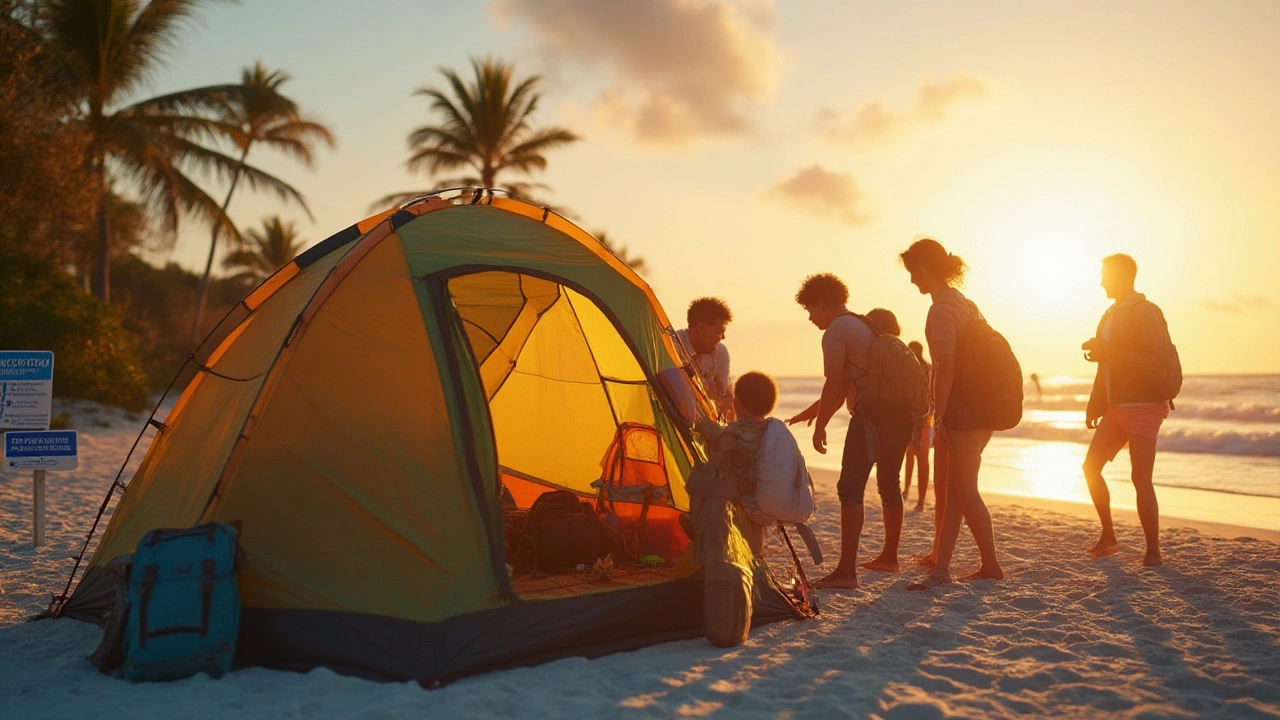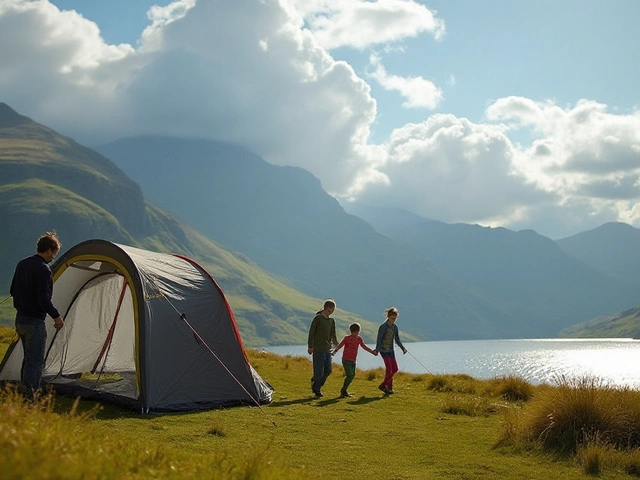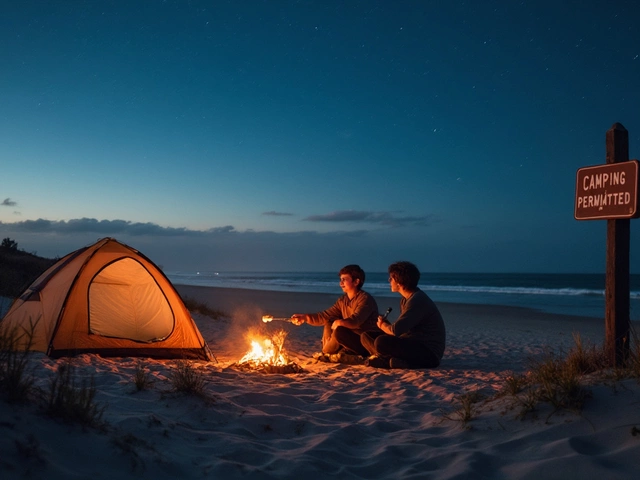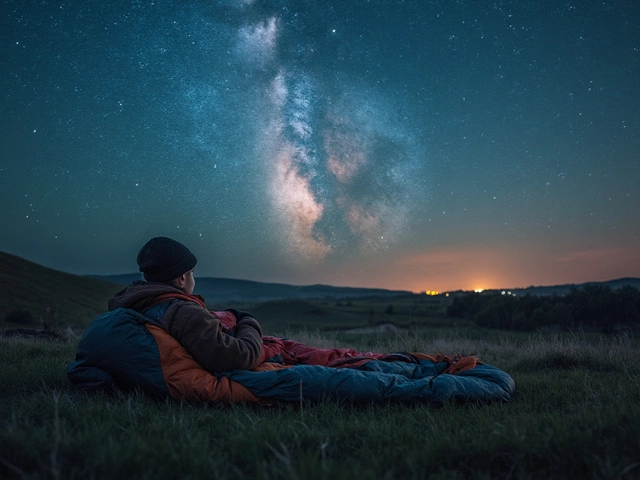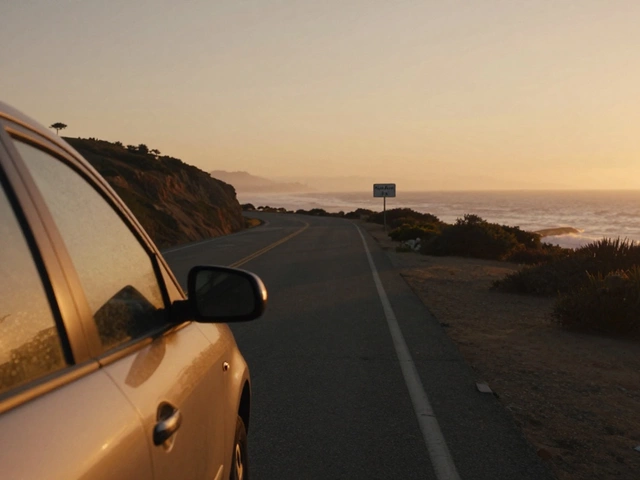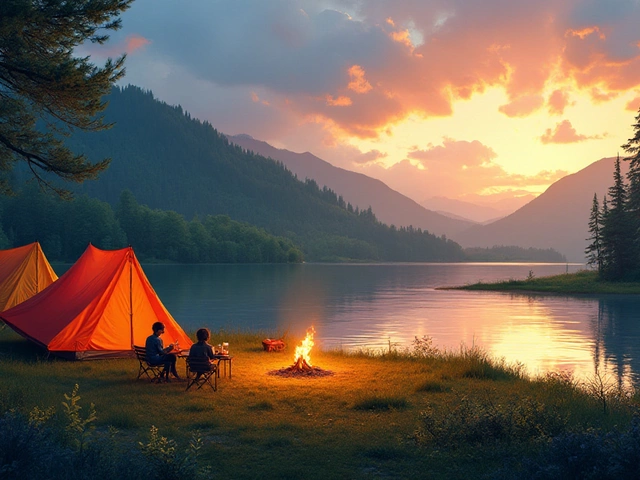Ever wish you could just pitch your tent on the warm sand, fall asleep to the sound of crashing waves, and wake up to a sunrise straight out of a postcard? The idea grabs a lot of folks every year: camping right on the beach in Florida. But here’s the thing—before you grab your tent and head for the dunes, you need to know what’s actually legal and what’ll get you a ticket (or a grumpy ranger giving you the boot at 1am). Sitting there with sand in your hair and hot coffee in hand, there’s nothing quite like a beach sunrise. But you need to do it the right way or risk spoiling the magic—and getting fined.
What the Law Really Says About Camping on Florida Beaches
Florida beaches might seem endless, and, technically, much of the sand belongs to the public. But that doesn’t mean you can throw down a tent anywhere you like. Every inch of shoreline falls under a patchwork of rules written by different counties, cities, and state parks. The biggest shock? Wild camping—meaning setting up on remote stretches with no facilities—just isn’t legal on most of Florida’s coastline. Local ordinances come first, and they’re usually designed to keep beaches clean, undisturbed, and safe. This means that on most public beaches (think Miami Beach, Clearwater, or Daytona), pitching a tent overnight can land you with a citation for trespassing, violating curfew, or breaking local codes about structures on the sand.
You’ll quickly find that overnight camping is banned on the busiest tourist beaches, and some cities even outlaw any kind of tent or shelter from dusk until dawn. In some places, you can’t be on the sand at all after dark—not even for a night stroll or a midnight sip of wine under the stars, let alone to set up camp. The main reason? Sea turtle nesting. Each year, from roughly May to October, Florida’s beaches become crucial nesting grounds. Nests get marked and protected with tape. Lights, tents, and the footsteps of campers mess with the turtles’ ancient routines. That’s why a lot of towns are extra strict about enforcing “no camping” rules during nesting season. Don’t test your luck: local police and rangers are used to dealing with hopeful campers and rarely make exceptions.
What about hidden spots off the beaten track? Even if you manage to find a remote slice and set up, there’s a big risk you’re actually on private property. Florida’s unique “mean high tide line” law means land below that line is public, but above it, it might be privately owned—even if it looks wild and abandoned. Locals are passionate about protecting their turf. Trespassing rules get enforced; signs aren’t always posted. Bottom line: unless you see a posted sign inviting camping, assume it’s not allowed.
But there are exceptions, and that’s where things get interesting. Florida State Parks offer some of the best legal beach camping in the state. The catch? You must camp in designated areas, pay a fee, and follow a list of rules (think “no generators” and “please keep your snacks turtle-friendly”). National Parks like Canaveral National Seashore and Gulf Islands National Seashore also let you camp on the beach in certain zones, but you have to secure a permit ahead of time. Primitive camping is allowed on some select islands and beaches if you get the proper permissions; these are highly sought after, with spots sometimes booked up months in advance. So, if you dream of beach camping, don’t expect to just show up and hope for the best—a little planning is crucial.
Keep in mind, different parts of the state can have completely different rules. In the Panhandle, you’ve got gorgeous state parks like Grayton Beach and Topsail Hill Preserve, where you can camp with your toes practically in the salt water. On the Atlantic coast, check out Sebastian Inlet or Anastasia State Park. Down south, the Florida Keys are famous for beachfront campsites, but wild camping outside approved parks is strictly off-limits. Munyon Island inside John D. MacArthur Beach State Park once allowed primitive camping but stopped as the crowds increased (and the trash piled up). Rules can change every year—especially if hurricanes hit or wildlife populations are under pressure. Always double-check before packing up your gear for a night under the stars.
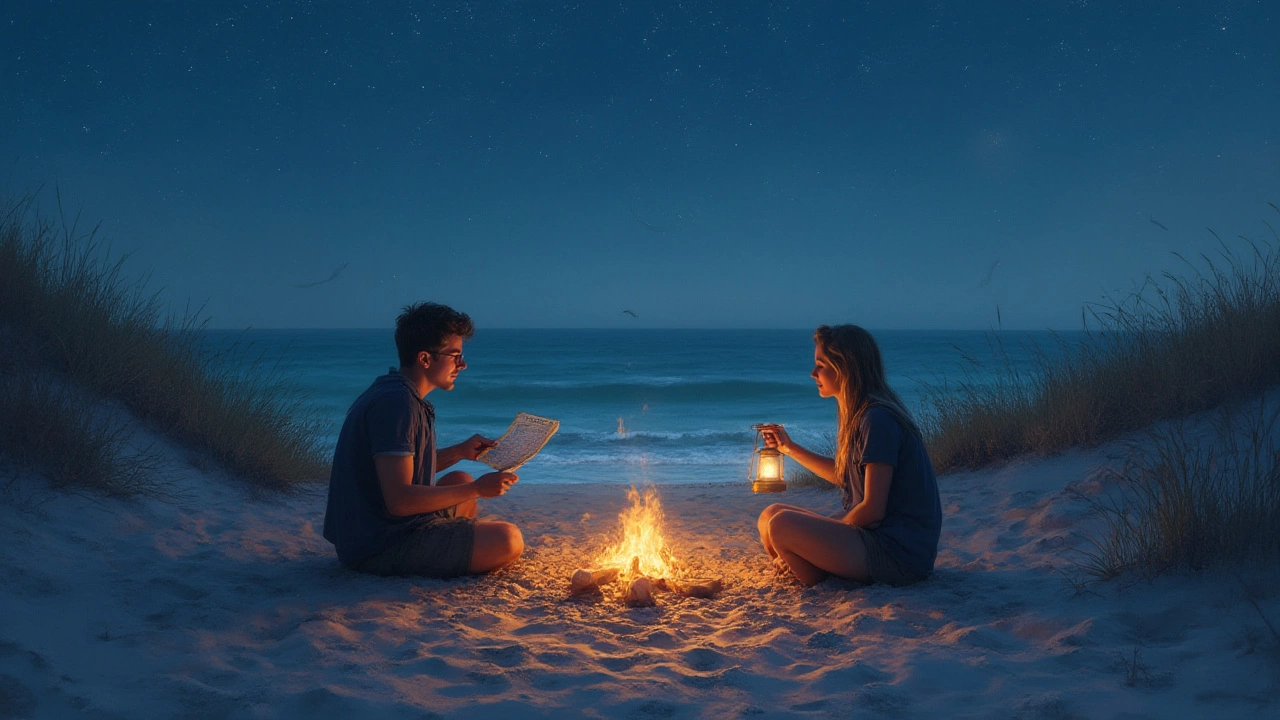
Where You Can (and Can’t) Set Up Camp: The Best Legal Beach Camping Spots
If you’re still determined to sleep by the waves, Florida does come through for campers—if you don’t mind a few rules and some competition for reservations. Your most reliable bet is to look for state parks with beachside campgrounds, often just a short walk from the sand. Places like Bahia Honda State Park in the Keys, Fort De Soto Park near St. Pete, and St. George Island State Park on the Gulf are legendary for waking up just steps from the surf. Some campgrounds, such as the ones at Fort Pickens or Big Lagoon in the northwest, allow you to fall asleep with the sound of waves in your tent, even if you can’t camp right at the water’s edge. All these sites require advance reservations, which can get snapped up fast—especially on holidays and during peak season from December to April when snowbirds flock south.
Planning to avoid the crowds and get a little wild? Look into beach camping on uninhabited islands and sandbars. Offshore slices like Cayo Costa State Park or Shell Key Preserve only allow primitive camping by permit. You’ll need a boat to reach them, and you’ll be packing in (and out) all your supplies, including water, because there are zero amenities. Some islands in the Ten Thousand Islands chain off Everglades City open for primitive camping, but rangers check for permits, and eco-rules are extra strict. It’s incredible, though: think tent pitched in pure white sand, with dolphins offshore and not a condo in sight. Just remember, bugs in summer can be maddening and afternoon thunderstorms come out of nowhere, so be ready for anything.
One of the most iconic spots for legal beach camping? The Canaveral National Seashore. Permits are required, but you can set up camp on designated backcountry islands tucked inside the Mosquito Lagoon. Minimal facilities, max adventure. On the Gulf side, islands around the town of Cedar Key are open for primitive boat-in camping with the right paperwork. But don’t forget: dry camping means no restrooms or running water, and you’re 100% responsible for not trashing the place. Littering can get you huge fines, and washouts from storms regularly wipe the landscape clean, taking careless campers’ stuff with them.
Looking for a touch of comfort? Many county parks along both coasts run their own beachfront campgrounds. These often book up faster than even the most popular state parks, especially if you want hookups for an RV or campervan. Indian River County’s Sebastian Inlet area, for example, offers nights under the palms with full bathrooms, fire pits, and beaches just steps away. Some privately owned campgrounds and RV parks also sit close to the coast, though direct-sand tent camping is rarely allowed—most want you in a defined site behind the dunes, with strict no-noise rules after dark. Big events (like spring break or Fourth of July) mean even tighter regulations: extra rangers, well-marked boundaries, and sometimes full closures after sundown.
If you’re hoping for that real old-school, toes-in-the-sand experience, be ready to get organized. Use Florida’s state park reservation system, which lets you book most public campgrounds up to 11 months in advance. National park permits, like those at Everglades, also open in rolling windows. Want to try free camping? The Florida Fish and Wildlife Conservation Commission manages some wilderness areas that allow primitive camping, but hardly any are right on the beach. Research, plan ahead, snag permits early, and always have a backup spot in mind. The dream is possible—but only for those who play by the rules.
Here’s a quick list of tips to help you get a legal (and memorable) beach camping trip in Florida:
- Always double-check local ordinances before heading out. Even within the same county, rules can shift fast depending on wildlife, holiday crowds, or environmental changes.
- Book permitted campsites—state, county, or national parks—well in advance, especially for weekends or anything between December and April.
- Respect turtle nesting zones and closures, usually announced May-October. Beach patrols are extra busy during this time.
- If you’re primitive camping, bring everything you need (including water) and leave no trace. Every wrapper and scrap needs to go home with you.
- Avoid loud music, fires outside designated rings, and wandering onto private property. Rangers are strict, especially in high-season.
- Keep an eye on tide charts—some otherwise legal areas can vanish underwater if you camp below the high tide line.
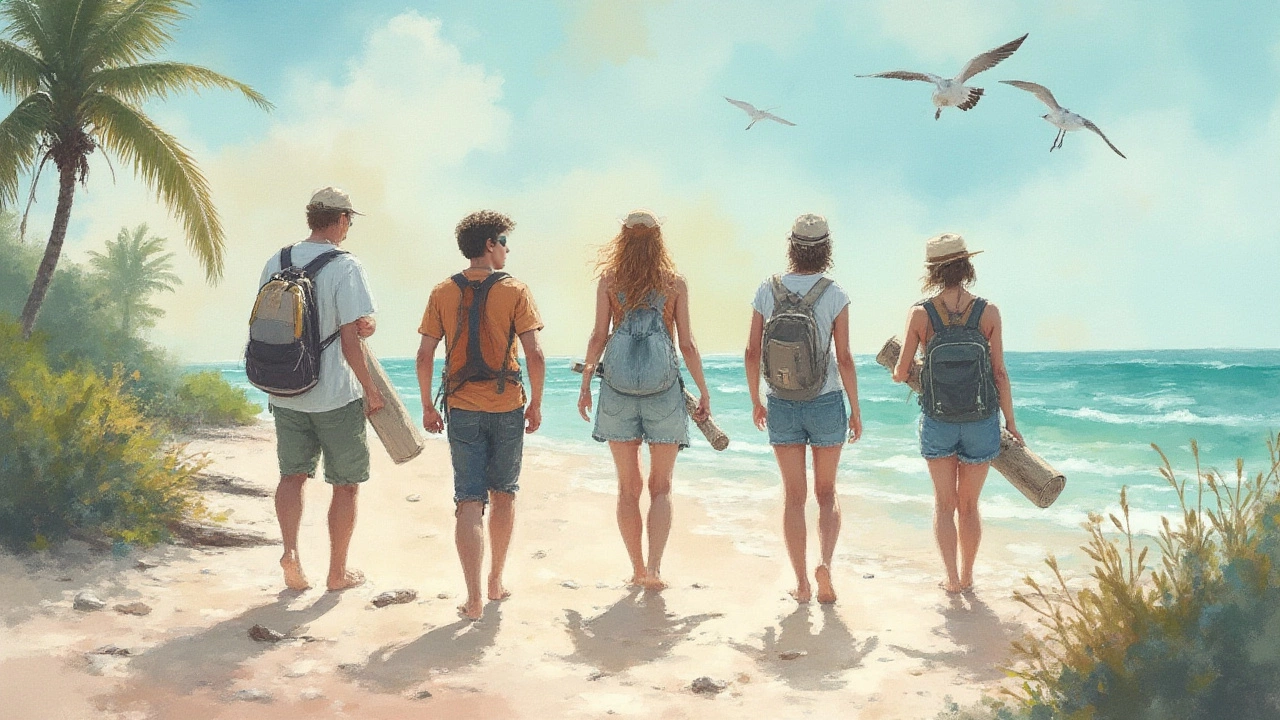
Essential Rules, Safety, and Tips for Your Florida Beach Camping Adventure
Camping at the edge of the ocean is unforgettable, but doing it safely and legally means knowing both the written and unwritten rules. If you skip the official sites and risk wild camping, you’re not just tempting a fine, but you could end up on someone’s property (and a few Florida landowners famously don’t mess around). Such risks aren’t just legal; they can become dangerous. Florida’s coastal weather is famously chaotic—clear blue mornings can turn to thunder in an hour. Hurricanes aside, “pop-up” storms can flood low-lying sands, leaving campers frantically packing up at midnight. And yes, sand flies and mosquitoes bite year-round, especially once the sea breeze dies down close to dusk.
Wildlife can show up where you least expect it. Raccoons, foxes, and even wild pigs are notorious for raiding food. Alligator sightings aren’t common on saltwater beaches, but don’t sleep too close to freshwater streams or lagoons that feed into the ocean. Stingrays and jellyfish sometimes wash up—keep flip-flops handy for midnight sorties. Watch for loggerhead or green turtles during nesting months, and steer clear of their marked nests. Touching, obstructing, or shining lights on turtle tracks is both illegal and seriously frowned upon by locals. Having a red flashlight is required in some parks during nesting season.
Here are some less obvious tips for making your trip unforgettable, not regrettable. First, invest in a sand-proof tent—ventilation is crucial, as high humidity and salty mist will soak regular gear. Always stake your tent securely: winds on open beaches can whip up fast, and nothing attracts a ranger like a windblown camp full of scattered gear. Bring cash for state or park entrance fees (some kiosks don’t take cards), and if you go off-grid, let someone know your trip plan. Cell coverage dies quickly on some outer islands, especially after storms. And don’t forget the bugs. Mosquito netting is a must—even in December. For food, go low-waste and wildlife-proof. Non-perishable snacks, canned meals, and hard-sided coolers keep sneaky raccoons at bay. Fires? Only in official pits—never dig your own on the open sand. Fire bans happen regularly, especially in dry spring months.
Don’t underestimate how cold it can get at night, even in a Florida winter. Pack a lightweight but warm sleeping bag if you’re going for more than a night. Summer can be brutally hot, so light, synthetic layers that dry quickly are your friend. Tides change constantly, so set your tent well above the current high-water mark (use driftwood or wrack lines as a guide). Always know your exit routes in case the weather turns, and bring a sturdy trash bag to pack out every bit of litter. Trash left behind ruins it for everyone, and Florida’s park rangers are quick to slap fines on “leave no trace” rule-breakers.
Next-level: bring snorkels, fishing poles (with a state fishing license if you want to actually land something), waterproof games, or binoculars for epic star- and bird-watching. If you’re into photography, sunrise and dusk turn the sugar-white sands rose gold for the best shots. Some state and county beaches even run ranger-led programs during the peak season—keep an eye out for sunset walks or sea turtle lectures.
The legal bottom line? Florida beach camping is all about knowing the exact spot where you’re allowed set up, and playing by the rules set by whichever local government or park service is in charge. The rewards are huge—fall-asleep-to-the surf mornings, fresh-sea-breeze coffee, pelicans gliding at dawn. But winging it and hoping for the best will just lead to disappointment. This isn’t the era of ‘just set up wherever you want’—but if you’re smart, respectful, and prepared, there are still ways to pitch your tent in paradise.
